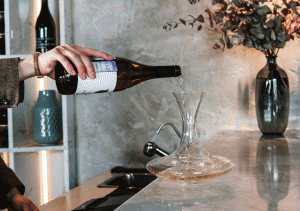Most Decanter readers will be planning on opening something special for the Christmas festivities, whether it’s that expensive bottle of Bordeaux or Burgundy, or your favourite vintage Port. But what are the main reasons for using a decanter and what are the key things to remember?
The decision on whether to use a decanter will be very much down to individual enthusiasts – there really are no right or wrong answers when thinking about decanting. However, one thing is always worth bearing in mind – you cannot magically ‘age’ a wine by decanting it before drinking.
When you decant, what you are doing is exposing the wine to oxygen, which starts to have an effect on many of the complex compounds within the bottle. These will cause the wine to change, but bear in mind that it is also possible for these changes to have a negative effect.
All your wine questions answered in our Learn section
You may also want to consider ‘double- decanting’, whereby you first decant wine from the original bottle to give it some exposure to air, and also to separate the liquid from any sedimentation that may have formed in the bottle. After cleaning the bottle out, carefully refill with the decanted wine (a funnel is a good idea) – your guests will enjoy seeing the original bottle with no risk of tartrate deposits as the bottle is finished.
Top Tips for Decanting
1. Always ensure that your decanter is a suitable container for the wine you are planning to serve, and make sure that it is spotlessly clean. The best option is simply to rinse thoroughly with hot water – avoid detergents.
2. Consider what (and when) to decant. This is a key question as many wines won’t benefit from the decanting process.
3. As a general rule, if you have older or more delicate wines, then ask yourself ‘does this wine really need decanting’? The process of aeration could result in losing many of the lighter aromatic characters and you might be better to open the bottle close to the time of pouring.
4. If you have a youthful red wine then decanting may help to slightly smooth out the palate, but there will only be relatively minor changes – as mentioned before, you cannot soften tannins or reduce acidity through the process of decanting. However, you may entice more aromas out by letting the wine ‘breathe’.
5. Take your time and decant in good lighting conditions. You don’t need to use a candle to be able to spot sediment in the neck of the bottle as you decant – a torch or bright light source behind the wine will work just as well.
6. Gently pour from an angled bottle into the decanter, avoiding splashing the wine as it goes into the container. If decanting a red wine, stop just after the point when you start to see deposits appear in the neck of the bottle.

7. Seriously consider decanting premium white wines (or those where a reductive winemaking approach has been used). Many experts feel decanting has more of a role for wines such as Chardonnay from Burgundy, Australia or California, as any ‘smoky’ reductive character (struck match) may be very noticeable to some consumers. Many sommeliers today choose to decant whites, rather than red wines.
8. Have a little taste of your wine as soon as you have decanted it, then monitor it as it breathes and develops, so you can judge the perfect time to enjoy it at its best.


